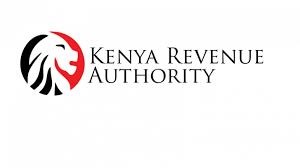Kenya Revenue Authority’s latest monthly revenues figures have caught the attention of many with VAT collections increasing by 28.2% to KES 32.1 bn in May. This achievement has not been made by increasing the tax levels but by an aggressive purge of fraud within the tax system. This signifies that there is a shift of how the Kenya Revenue Authority manages technology and institutional integrity. The surge follows a sweeping internal audit and enforcement campaign that exposed a wide network of fake VAT refund claims and ghost transactions. By nullifying suspicious claims and freezing companies linked to invoice fraud, KRA effectively plugged one of the most persistent leakages in the country’s tax system.
While past reforms have often been policy-heavy and slow to yield results, this latest performance illustrates the power of administrative action. By targeting fraud directly, KRA has unlocked revenue that was previously invisible to the system, without adding pressure to compliant taxpayers. The record VAT figures also point to the growing importance of digital infrastructure in modern tax collection. Systems like iTax have evolved beyond passive filing platforms to become tools for real-time monitoring, cross-referencing, and anomaly detection. With this shift, tax administration is becoming more predictive than reactive.
From this turnaround, various public institutions, both local and in the region, can unlock revenue by fixing internal weaknesses rather than burdening taxpayers with additional taxes. Lessons that can be borrowed from KRA’s record breaking performance is that administrative reforms are as powerful as policy changes. For years, tax discussions in Kenya have centered on rate hikes, widened tax brackets, and new fiscal laws. KRA’s VAT turnaround shows that cleaning up administrative systems can be just as impactful. By identifying fraudulent claims and auditing suspicious transactions, the authority boosted revenue without touching policy. Second, technology is only as good as its use. The iTax platform and related digital systems have been in place for years, but their recent role in identifying fraud marks a shift from passive data collection to active surveillance. KRA’s use of analytics turned existing systems into engines of accountability. Third, institutional integrity drives public confidence. When fraudulent actors are weeded out and rules are enforced consistently, compliance improves. KRA’s purge sends a message that enforcement is not selective or symbolic.
Beyond revenue, the clean-up carries symbolic weight. It signals to businesses and the public that fraud will no longer be met with impunity, and that Kenya’s tax system is moving towards greater integrity. In a country where tax compliance has often been undermined by perceptions of unfairness and corruption, that shift may be just as valuable as the money itself. It also reveals that Kenya may have just taken a crucial step toward building a leaner, cleaner, and more accountable tax regime.

















